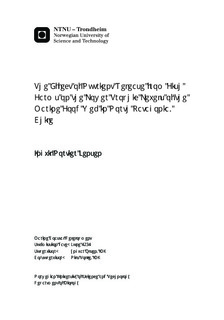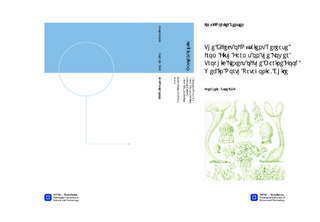| dc.contributor.advisor | Olsen, Yngvar | nb_NO |
| dc.contributor.advisor | Tokle, Nils | nb_NO |
| dc.contributor.author | Jensen, Ingvil Nortier | nb_NO |
| dc.date.accessioned | 2014-12-19T13:12:39Z | |
| dc.date.available | 2014-12-19T13:12:39Z | |
| dc.date.created | 2012-11-10 | nb_NO |
| dc.date.issued | 2012 | nb_NO |
| dc.identifier | 566990 | nb_NO |
| dc.identifier | ntnudaim:6966 | nb_NO |
| dc.identifier.uri | http://hdl.handle.net/11250/245084 | |
| dc.description.abstract | A mesocosm experiment was performed over 16 days during austral summer in 2010, in Northern Patagonia, Chile. Nutrients were added in 8 different concentrations along a gradient, simulating different levels of nutrients released by salmon farms. Nitrogen loading rate ranged from LN = 0 μg l-1 d-1 to LN = 42 μg l-1 d-1, and Silicate and Phosphorus were added in Redfield ratios. The goal of the study was to look at the effect of nutrient addition on the lower trophic levels of the marine pelagic food web represented by three groups of organisms: Phytoplankton, Ciliates and Copepods. Nutrient addition was found to have a very clear effect on chlorophyll a, POC and ciliate biomass, which showed a very clear linear increase with increasing loading rate. POC and chl a values showed that phytoplankton growth started immediately after nutrient addition. At the maximum level POC values had become 13 times larger than at the original level. Phytoplankton community composition, in the mesocosms with the highest loading rates, was found to shift from larger cells in the beginning of the experiment to smaller cells towards the end. Ciliate biomass was found to increase linearly with food concentration, indicating that ciliate population growth was closely tied to food availability. Ciliate biomass peaked on day 8 with 117 μg C l-1 found in the treatments with highest nutrient additions. A maximum of 91 ciliates ml-1 was found on day 16 during the experiment. Both these values are much higher than what has previously been reported in the area, indicating that ciliates might play a more important role in the Patagonian marine food web than previously thought. Copepod concentration and biomass were found to be uncorrelated to both nutrient addition and food concentration. This study found that nutrients released from fish farms have the potential to cause drastic increases in chl a and phytoplankton and ciliate biomass, as well as affect the community structure of phytoplankton. | nb_NO |
| dc.language | eng | nb_NO |
| dc.publisher | Institutt for biologi | nb_NO |
| dc.subject | ntnudaim:6966 | no_NO |
| dc.subject | MSMACODEV Marine Coastal Development | no_NO |
| dc.subject | Marine Biology and Biochemistry | no_NO |
| dc.title | The Effect of Nutrient Release from Fish Farms on the Lower Trophic Levels of the Marine Food Web in North Patagonia, Chile | nb_NO |
| dc.type | Master thesis | nb_NO |
| dc.source.pagenumber | 48 | nb_NO |
| dc.contributor.department | Norges teknisk-naturvitenskapelige universitet, Fakultet for naturvitenskap og teknologi, Institutt for biologi | nb_NO |

